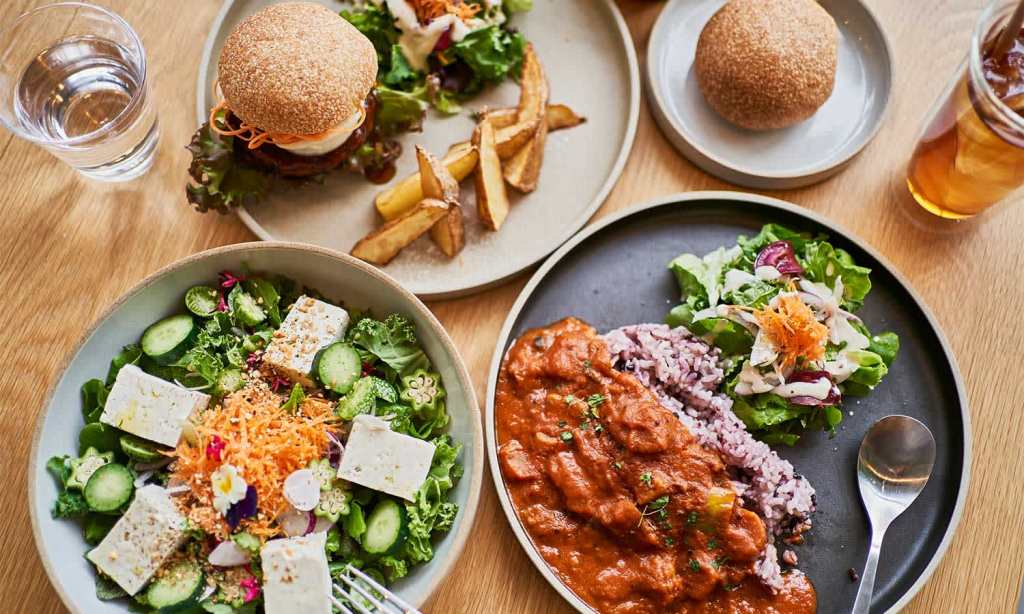Plant-based doesn’t necessarily mean only eating plants, but it does have a major focus on it with an abundance of fruits and veggies, nuts, seeds, legumes and beans incorporated into the diet. It’s different to a vegan diet, which centres on cutting out meat. Meanwhile, those with a plant-based diet can and do eat lean meat, fish and poultry.
So, if you’re keen to cook and eat plant-based more at home, how should you go about it? What are some tips and tricks to better weave those leaves into your meals? Ahead, Ian Curley, Group Creative Culinary Director for Ovolo Australia, shares six ways to do so.
Get Creative With Ingredients
“For a lot of people who are making the transition to plant-based eating, trialling vegan and vegetarian diets, there’s a very strong assumption that all meals are going to be both boring and bland. Just because you aren’t cooking with traditional meat sources doesn’t mean you can’t experiment with flavour. Vegetables take to spices and herbs just as kindly as a BBQ rump.
“Eating plant-based also forces you to find interesting substitutes, vegetables, seeds, grains you perhaps wouldn’t have worked with unless forced to think outside the box. There’s only so much cauliflower and eggplant a human can have… play with jackfruit, tempeh, all the mushrooms. There’s an appendix of new ingredients that comes with eating naturally and organically.”
Don’t (Only) Rely on Vegan Meat Substitutes
“You can very quickly find yourself leaning on processed and packaged foods to form the base of your meal, but it’s quite scary to learn how much sugar and sodium can be hidden within these store-bought vegan substitutes. Look at the labels, and if you can find a healthy option, go for it.
“Otherwise, I tend to take inspiration from what’s on the shelves and attempt to replicate the burger patties, koftas and sausages, whatever it is you may be craving, and make this from scratch at home. Knowing exactly what goes into your meal plus the time and effort it takes to create it often makes it that much more enjoyable to eat.”
Take Advantage of Pantry Staples
“For me, it’s the not-so-secret ingredients, the pantry staples. Never underestimate how far your cooking oils, garlic, herbs and spices can go to elevate plant-based cooking and make all those ingredients sing.”
Splurge on High Quality Ingredients
“Quality produce makes a quality meal, simple as that. More often than not this food label tends to carry an element of sustainability too, whether the vegetables have been locally sourced, organically farmed, or are in seasonal rotation. At Alibi Bar & Kitchen, we rely on all of the above to bring the freshest and most exciting plant-based dishes to our menu time and time again.”
Use Substitutes for Cream and Milk
“Sometimes a dish really does need a level of creaminess that can only be achieved by ‘dairy’. Food tech innovation has come so far that nut milks and soy milks, and coconut creams can replace the full fat ingredient you thought you couldn’t do without.”
Experiment With Flavours and Spices
“It’s a humble reminder that vegan diets don’t have to be basic! One of my favourite dishes of late might be our slow-roasted heirloom carrots atop a cardamom custard with roasted coffee crumbs. Two really rich flavours (being the cardamom and coffee) that bring out the sweetness and earthiness of heirloom carrots.
“This dish is actually served as a part of the Sustainable Dinner Series we are hosting in partnership with Diplomático Rum, the next event taking place on May 18, so Sydneysiders can purchase tickets to get a taste of this dish and inspire more plant-based cooking (and rum sipping) in the home.”
Read more stories from The Latch and subscribe to our email newsletter.







